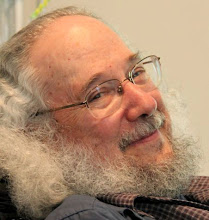Neuroscience, Education, and Reductionism
As an education researcher and a theoretical physicist, I’ve been very interested in the issue of how to think about education – how to develop a theoretical frame.* So one thing I’ve been doing is studying a wide variety of topics about human thinking and learning – psychology, linguistics, and neuroscience.
I’ve been told by a number of my experimental neuroscientist friends that their science “has nothing for yet me” in my attempts to develop a phenomenology of learning, and to “come back in 50 years.” They say, “a lot is really still up in the air.”
I think this attitude is based on a misunderstanding of the relation of reductionism to theory building in the natural sciences. First, we theorists don’t “wait for experimentalists to get it right” before building theory. The process of “getting it right” involves an intricate interplay of experiment and theory, a dance in which the leading partner can frequently switch roles. Furthermore, the interplay need not be on the same level of reductionism – micro, meso, or macro. Information flows across levels. Work at a large scale can inform work on the small.
For example, in the 1860’s, James Clark Maxwell began the development of statistical physics that is the basis for what is perhaps the most powerful reductionism we know – the way to create an understanding of the macroscopic properties of matter as it emerges from the behavior of molecules 10 orders of magnitude smaller in linear dimension.
But when Maxwell created his theoretical structure, very little was known about the properties of atoms and molecules. Indeed, many leading physicists of the day were not even sure of their existence. There was no convincing argument demonstrating molecular size (thought there were some hints), and chemical experiments suggested that their interaction properties were extremely complicated.
Maxwell succeeded in building a theory of gaseous matter using almost trivial assumptions about the nature of molecules.** He treated them as if they were hard spheres – obviously a ridiculous and unsophisticated assumption given what we knew about chemistry at the time! Even the simple fact that molecules form liquids and solids show clearly that there are attractive forces and that they are important.
Nonetheless, Maxwell was able to produce a beautiful and effective reductionism – and one that passed information back to the micro level. His explanation of transport phenomenon (e.g., viscosity, which moves momentum across parallel layers of a flowing gas) showed that measurable macro properties depended on a small number of microscopic parameters in a straightforward way, allowing him to infer molecular properties (such as average speed and mean free path) from macroscopic experiments. Indeed, the confirmed predictions from his transport theory produced some of the most convincing arguments for the existence of molecules in the second half of the nineteenth century. (Though that’s a topic for another post.)
Phenomena that are undetectable at the micro level can build up coherently when going to the macro level leading to clearer signals. For example, the small deformations of an atom in response to an electric field – the electrons pushed one way, the nuclei pushed the other – cannot be measured at the atomic level. But if every atom is pushed the same way, the resulting effect is observable at the macro level, thanks to the factor of 1023 in Avogadro’s number. In this way quantum predictions of atomic polarizability can be confirmed via macro measurements.
Finally, there are complexities at the larger scales that are difficult, if not impossible, to deal with by reducing things to smaller levels. We can’t really deal with the complexity of organic chemistry by reducing everything to the simple facts that there are atoms that interact and bind – and that there are only about 100 different kinds of atoms. The fact that the thousands and thousands of chemicals that make up our every day experience are combinations of a small number of different kinds of atoms is a deep and powerful insight – but it doesn’t begin to let us understand the complexity of organic chemistry. For that, we need organizing principles at a higher level.
So, for building a behavioral phenomenology of learning, my expectation is that some elements of neuroscience – even what we know today – are going to be important, even though the details might not be fully worked out. But the interplay of knowledge between the macroscopic behavioral level to the microscopic is already important. [For example, see how neuroscientists use the implications of behavior associated with neural damage.***] Interactions between learning theory and neuroscience might wind up being of value both to the macro and micro researchers.
* A Theoretical Framework for Physics Education Research: Modeling student thinking, Edward F. Redish, in Proceedings of the International School of Physics, "Enrico Fermi" Course CLVI, E. F. Redish and M. Vicentini (eds.) (IOS Press, Amsterdam, 2004).
** in Kinetic Theory of Gases: An Anthology of Classic Papers With Historical Commentary, Stephen Brush(Imperial College Press, 2003).
*** From Neuropsychology to Mental Structure, Tim Shallice (Cambridge U. Press, 1988).

